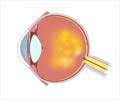The new study shows benefit of Erbium YAG laser for the treatment of overactive bladder symptoms, with minimal adverse events at 12 weeks.

What is Overactive Bladder Syndrome?
Overactive bladder syndrome is defined as urinary urgency, usually accompanied by frequency and nocturia with or without urgency urinary incontinence, in the absence of a urinary infection or other related medical problem. As women age, they are more likely to experience symptoms.‘Vaginal laser surgery was found to be beneficial in people with overactive bladder syndrome (OAB).’





The most common treatments for OAB include behavior therapies, pharmacologic management, injections, and localized nerve stimulation. Erbium: Yttrium-Aluminum-Garnet (Erbium YAG) vaginal laser treatment is already used to treat various symptoms of the genitourinary syndrome of menopause, vaginal relaxation syndrome, and pelvic organ prolapse by increasing epithelial thickness and stimulating the growth of new collagen and blood vessels. This new small-scale study sought to evaluate the efficacy of the vaginal Erbium YAG laser in the treatment of OAB. Participants received a single laser treatment and were evaluated 12 weeks after the session. Women receiving the laser treatment reported less nocturia and urgency, as well as significant differences in daytime urination frequency, urgency episodes, and increased voided volume. Additional benefits included reduced vaginal atrophy symptoms.
Adverse events were minimal, including mild vaginal pain and vaginal bleeding. All these problems were gone by the time of the 12-week follow-up. Larger studies are needed in the future to include longer-term follow-up.
Study results are published in the article “Efficacy of Erbium YAG laser treatment in overactive bladder syndrome: a randomized controlled trial.”
“Larger studies with longer-term follow-up, as well as a cost-effectiveness analysis, are needed before this treatment can be recommended as a therapy for overactive bladder syndrome,” says Dr. Stephanie Faubion, NAMS medical director.
Advertisement















